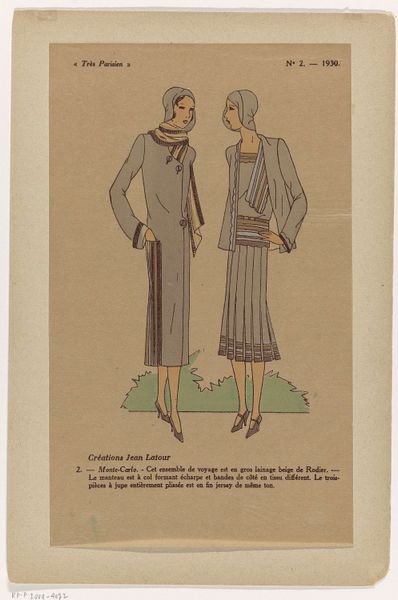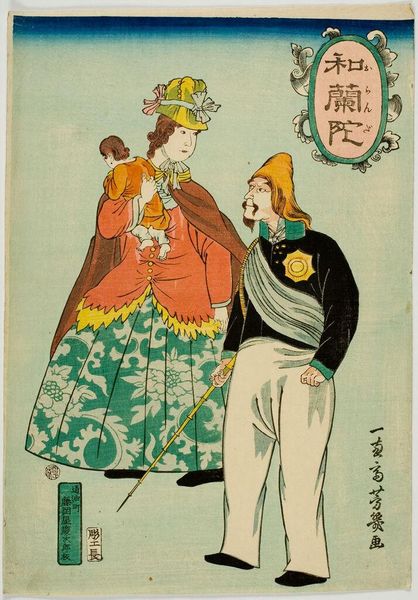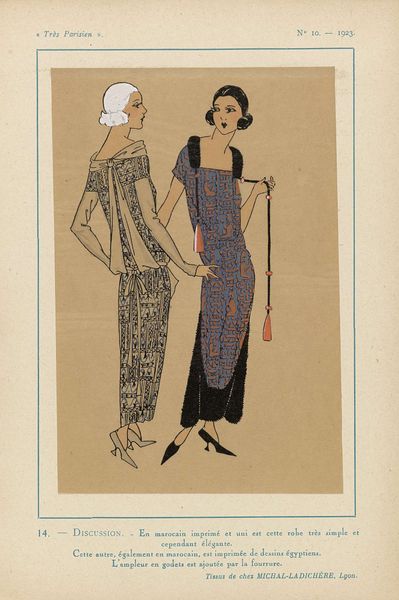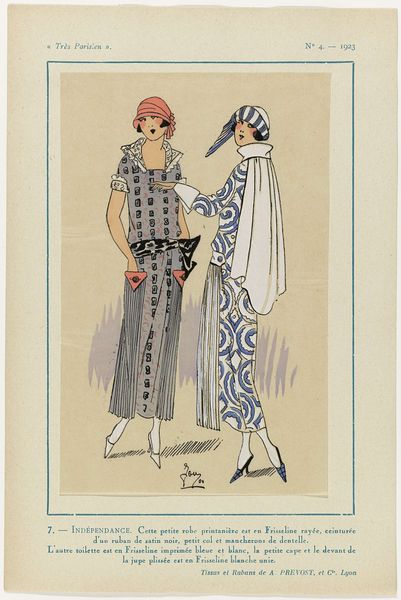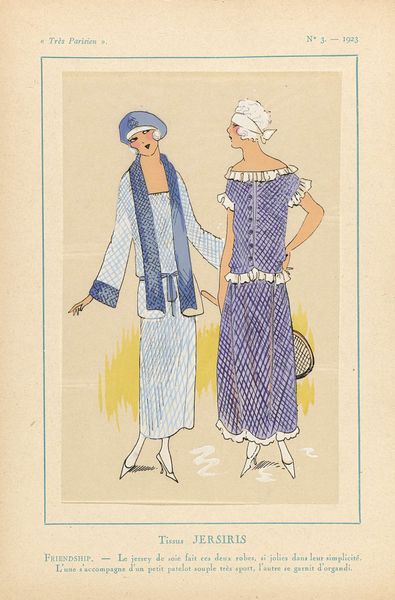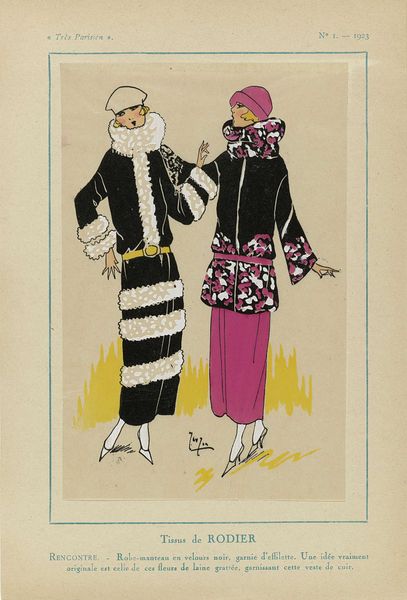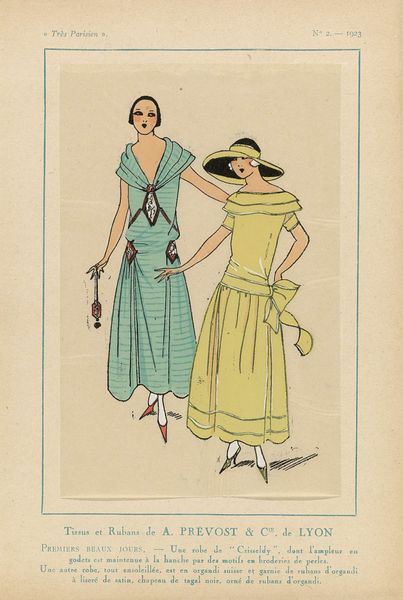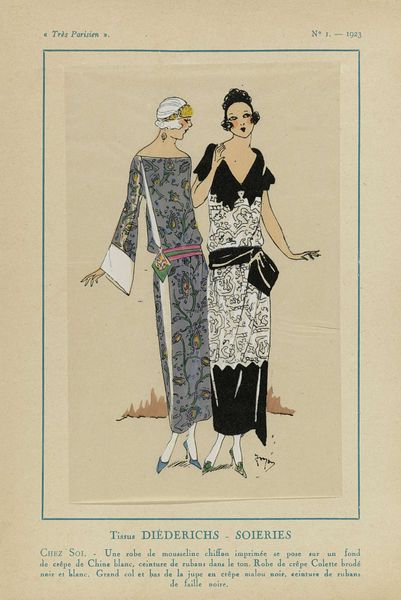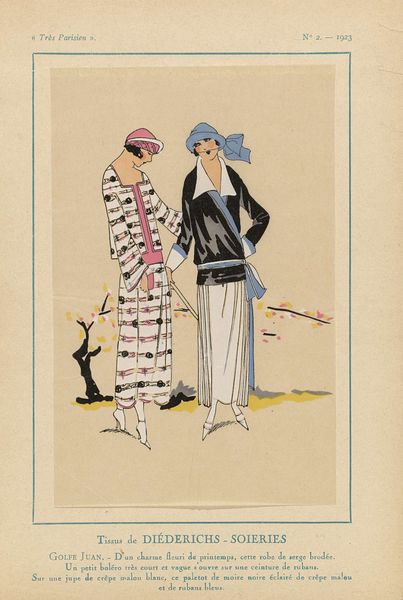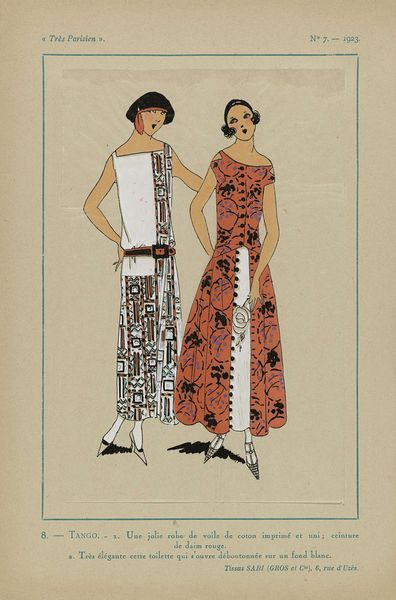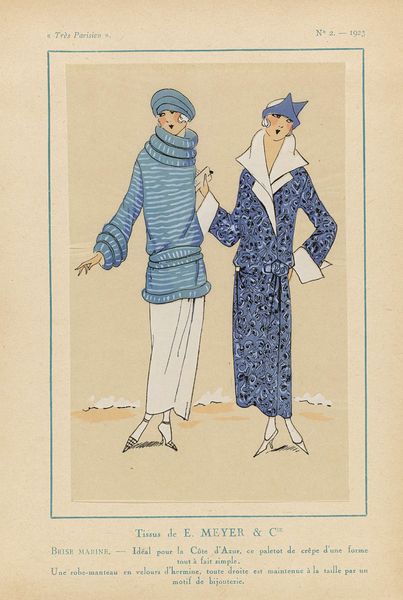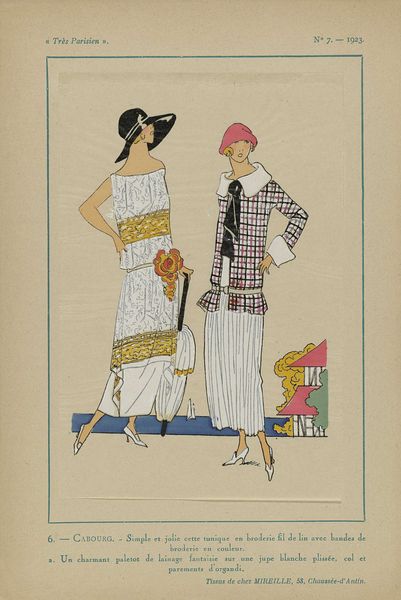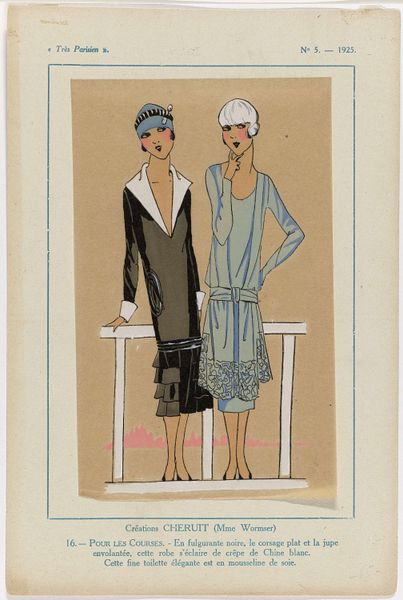
painting, watercolor
#
portrait
#
art-deco
#
painting
#
figuration
#
watercolor
#
historical fashion
#
sketchbook drawing
#
watercolour illustration
Dimensions: height 273 mm, width 183 mm
Copyright: Rijks Museum: Open Domain
Curator: Look at this watercolor from 1927, “Trés Parisien, 1927, No. 4: La mode le chic l'élégance...” It's currently held in the collection of the Rijksmuseum. What are your first thoughts? Editor: Instantly, I'm struck by how light and airy it feels, despite the formality of the figures and their attire. It reminds me of those heady, fragile interwar years. Curator: Indeed. We can certainly view this image through a feminist lens. Fashion plates of this era reflected both an assertion and an idealization of a woman's identity during this critical time between wars. This piece exemplifies what it meant to be "chic" and "élégante." Editor: The styling clearly points toward that iconic period: The cloche hats, the elongated silhouette, the rejection of the corseted form... Even the color palette speaks to a modern sensibility. These shades are like a silent language. Curator: The image presents this new, liberated, "garçonne" look that was coming into its own at this time. Yet, despite this apparent liberation, the artwork also conveys elements of performance, artifice, and even subtle restraints dictated by the patriarchy. Editor: Interesting. I see in their attire, with those almost geometric lines and ornamentation, visual echoes of Art Deco motifs. Spirals of organic growth intertwine with stark edges suggesting nature molded by culture and status. Note too the accessories, like a flower brooch. These recurring items take on weight: blooms can speak to rebirth, loss, youth, etc. Curator: It highlights this fascinating interplay of self-expression and prescribed norms during a period of significant socio-political changes, and particularly changing standards around women’s rights. We can even delve into examining how advertising, of which this is a sort of example, played into these shifts in the 1920s. Editor: It does open so many avenues for exploring the construction—and indeed, the iconography—of modern femininity, and particularly ideas about being Parisian during the period. Seeing such familiar emblems displayed, re-contextualized helps unlock their rich pasts. Curator: Absolutely. This piece provides an important context for a time that forever altered gendered social landscapes. Editor: It’s more than just an image.
Comments
No comments
Be the first to comment and join the conversation on the ultimate creative platform.
